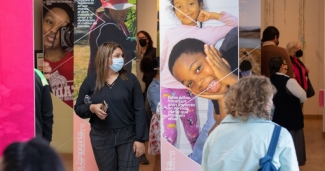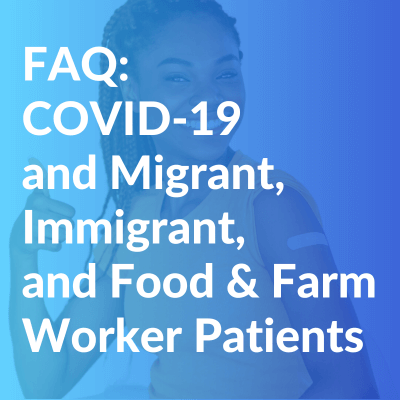Women’s Voices Matter. MCN’s Photovoice Project Is Dedicated to Them.
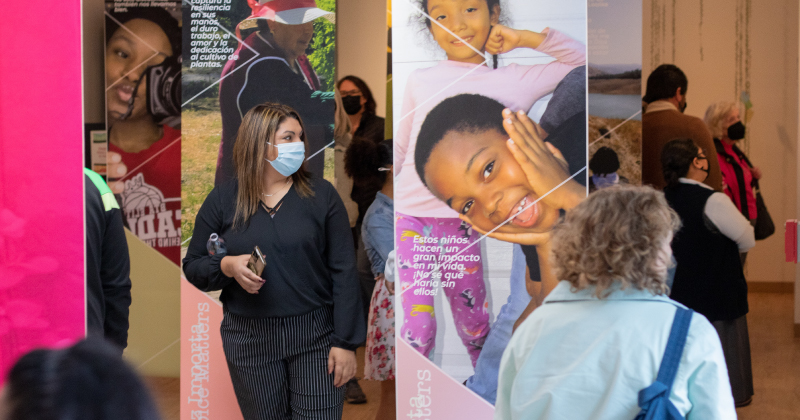
Today is International Women's Day. Across the world, numerous countries will recognize the contributions of women across cultural, economic, political, and social spheres. The roots of this holiday run deep. The very first celebration of the holiday took place in 1909, spearheaded by the Socialist Party of America. The first official observance took place in 1975, when the United Nations heralded it as “International Women’s Year.” The effort capped off decades of global organizing that gradually influenced the sociopolitical conventions defining the status of women within the working class.
International Women’s Day celebrates the lived experiences of women. These stories show women's contributions to the movement towards progress and are offered as appreciation of the historical role of women in shaping our world. The celebration recognizes that, to best understand how women come to changing the world, we must first recognize from whence they came.
It is in this vein that Migrant Clinicians Network, at the direction of Robyne Hayes, a professional researcher and photographer, hosted the opening exhibit for Tu voz importa, a photovoice project that utilized a series of workshops where Hayes taught a group of immigrant women and girls the basics of photography to allow them to document the stories of their lives. From the very beginning, the goal was to establish a platform for the participants to share their stories. With the tools, knowledge, and guidance provided, they were equipped to create their own interactive exhibit in partnership with the Valene L. Smith Museum of Anthropology. Located on the campus of California State University, Chico, the museum serves as "a teaching laboratory" that strives to offer education on curation and community partnerships, according to Heather McCafferty, Faculty Curator.
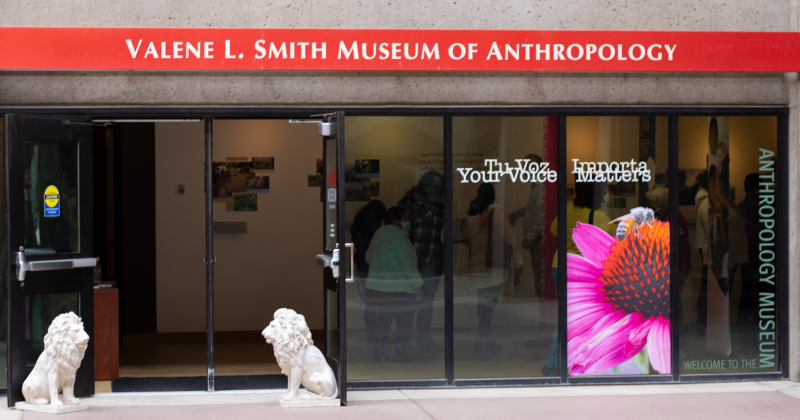
"Graduate Elizabeth Rosales worked closely with Robyne to facilitate the workshops, and later assisted with the exhibit curation, installation, and panel discussion, [so] the partnership was a meaningful hands-on opportunity for Elizabeth and the rest of the museum team," she said. "We felt honored to participate and offer a venue to share the stories and photography of the women who participated in the project."
Tu voz importa, Spanish for “Your Voice Matters,” took place primarily in Butte County, California. While the area seemed an ideal choice given the high population of agricultural workers, it also created a number of hurdles; the project spent more than a year in development to accommodate delays around local wildfires and the pandemic, disruptions that interfered with in-person gathering and learning, according to Adrienne Scott, the museum’s curator.
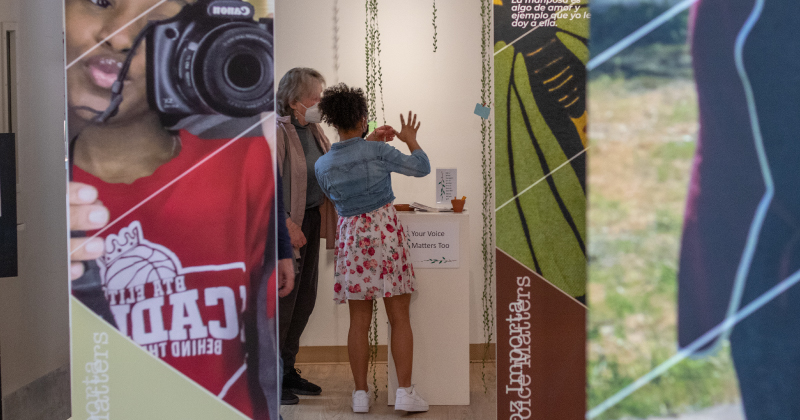
“Being able to shift and flex during these times provided its own lesson in resilience,” she said. “The resulting exhibition is [a] wonderful celebration of the ordinary miracles of life.”
The delays did bring about some positive changes. Among the most important was the extension of the partnership to the Northern Valley Catholic Social Services (NVCSS) Promotores program. The goal of Promotores is to enhance the quality of life for area families through a strength-based approach to promote mental health and well-being, and the unique focus of the Tu voz importa project caught the attention of Norma Servin-Lacy, the Promotores Program Manager.
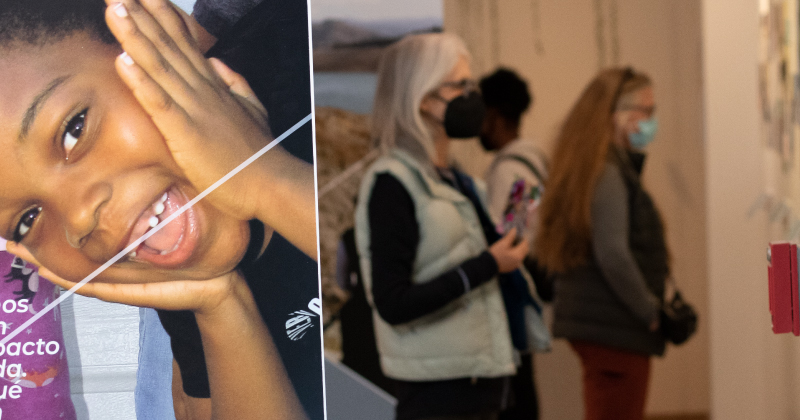
“Self-advocacy is something we are learning to do,” she said. “Due to many of the negative media portrayals and publicity around immigration, it, at times, causes hesitation [among] the culture’s wanting to share.”
Community Supports Project Through Donations
The success of the project hinged on support from numerous individuals around Butte County. Through a series of concentrated fundraising efforts, numerous women answered the call to help amplify the voices of their unacknowledged sisters. Some invested money through crowdfunding platforms; others, like attorney Angela Yahaira Breining, donated their professional skillsets to assist in creating an atmosphere of credibility.
Still others drew on their own connections to bridge the gaps that the project still possessed, such as Reyna Nolta. Nolta, who serves as the Event Chair for the Hispanic Resource Council of Northern California (HRC), a grassroots organization that provides information about available services, businesses, and programs of interest to the Hispanic community in Butte and surrounding counties, used several of HRC’s monthly meetings to suggest valuable partnership opportunities to help with recruitment and support.
“Art is a great motivator for healing and change. In helping with this project, I got to participate in that," Serena Marie Hary, a professional housecleaner who volunteered to serve as one of the five home cooks, said. “Further, I was able to cook for people, and that is a great way to show love and support.”
Hary’s words proved to be almost prophetic; Butte County’s thriving food-centric industry indeed proved to be a powerful source for support. Restaurant owners Evie Lawson of Gnarly Deli, Carolyn Kanabrocki of The Handle Bar, Kelly Gomez of Roots Catering and Erika Montanez of Bacio Catering each donated multiple meals for the participants during the workshops. Montanez also came to speak at one such workshop, encouraging the participants to embrace the power of their stories as women and migrants. Gomez recognized the value of the project in giving back to the community at large, a core value of her business philosophy.
“At Roots Catering, we have adopted a quote from Cesar Chavez that we hope we fulfill everyday – ‘When you give people your food, you give them your heart.’ We strive to reach people through our food and that they feel connected when breaking bread together,” she said. “These connections help to form community and with this we are all stronger. We are thankful for the people who shared their voices and gave us a face behind their story.”
Mindfulness of the exhibit's potential impact for the betterment of the community certainly helped drive support among other local businesses. One such important supporter was florist Rachelle Neal, owner of Flowers by Rachelle. Neal’s gifts included a floral arrangement and keepsake carnations for each of the 13 participants.
“During this past year [while] people and the community have felt disconnected, we are thrilled that celebrating women can bring the community together,” Neal said. “Flowers always help to not only brighten someone's day, but also to communicate ‘You are important, I thought of you today.’”
Servin-Lacy and her team worked diligently to be sensitive to these challenges, creating a recruitment strategy of transparency and cultural recognition as they invited current clients to serve as participants within the project, lending credibility to a process that was, by all appearances, being helmed from people outside the community. Such misconceptions were short-lived. Just minutes into helping run the first workshop, several of the Promotores staff opted to sign up as participants themselves. This included Zuly Cardenas Carreon, Ana Luisa Vazquez Lopez, and Antonia Sanchez Nunez, three Catholic nuns from Mexico volunteering with NVCSS as part of a five-year cultural exchange program. They joined the Tu voz importa participants to received guidance from Hayes on assignments intended to document their lives.
“Tu voz importa has brought out the hidden treasure of women’s innermost strength, allowing them the opportunity to heal by sharing with the world the beauty of telling their stories through pictures,” Servin-Lacy said, explaining the appeal for the staff to be both supporters and subjects. “Pictures are priceless. They, at times, speak louder than words, inspiring lives—both the joys and strengths.”
Fortunately, the Promotores were not alone in their work to embrace the stories being told by participants in their own terms. This angle intrigued supporters, including the Upstate Community Enhancement Foundation, Inc. More commonly known as “Friends of the Arts,” this Chico-located nonprofit promotes opportunities for collaboration around communication, education, economic development, arts, and culture around Butte County. In conjunction with Butte Community Access Center (BCAC.tv), Friends of the Arts secured 20 brand-new cameras, complete with accessories, for participants to use.
“Our community partners made this process possible,” Hayes said. “Everyone in this amazing community really came together and created something beautiful.”
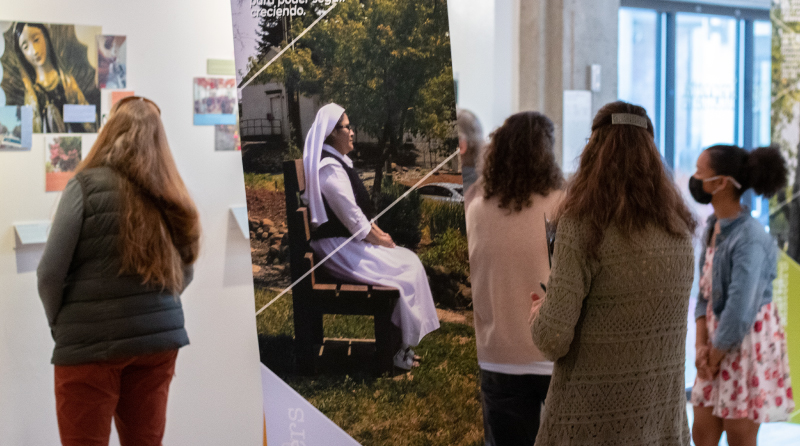
A subsequent partnership with Butte County’s Office of Education (BCOE) Migrant Education Program Region 2 meant that the project doubled from approximately 20 participants to closer to 60, virtually overnight. To accommodate this population spike, a second batch of cameras was borrowed from Inspire School of Arts and Sciences, a public charter high school located in Chico. With assistance from Michael Martinez, an Instructional Program Specialist with BCOE, Hayes adapted her curriculum to guide dozens of high school students through the project, much to the excitement of Region 2’s director, Sarah Yerman.
“Although many of our students own phones, most of them have never used a camera, [so] learning basic elements of photography from a professional is a skill they can use for the rest of their lives,” Yerman said. “I hoped that they would learn to view their environment in a new perspective, record it, validate it, then write about it. It was also exciting that their work would be viewed by the public in a [local] museum.”
At a time when many belonging to historically marginalized groups are struggling to be seen, Tu voz importa directly raises the visibility of the participants in the investment in their stories by challenging the audience to recognize the humanity in the images presented. The most notable impact of this art may have been on those who created it with their willingness to pull back the curtain to permit glimpses into their lives. The finished product reflected an immersive experience for the audience and the participants alike.
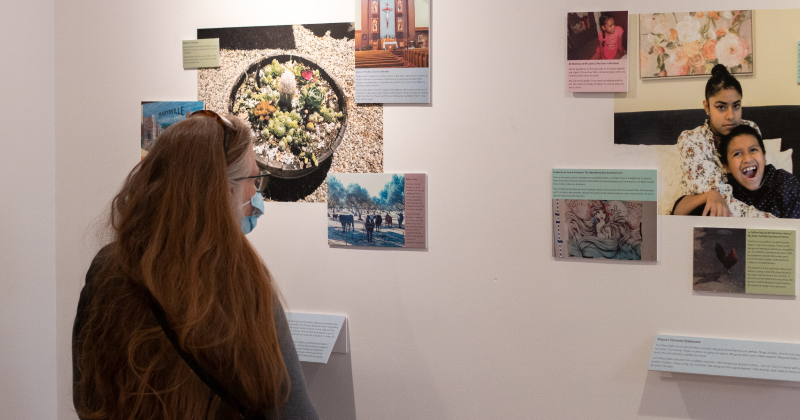
“The museum handled their stories with such care and respect, and it impacted the participants so deeply,” Hayes said. “The participants had no idea of what to expect, and many were moved to tears.”
For the participants, the power of the project went beyond simply taking pictures to document their lives. Each participant crafted a personal statement, the text of which the museum mounted on a placard to accompany their selected images. Several chose to use this space to introduce themselves and explain what prompted them to participate in the first place.
“I’m a daughter, sister, and friend,” the personal statement from participant Kenya Garcia reads. “I am originally from Mexico, but currently live here in California. I am grateful for all the opportunities I’ve been granted. I hope to become better at taking pictures, and through them, speaking to others.”
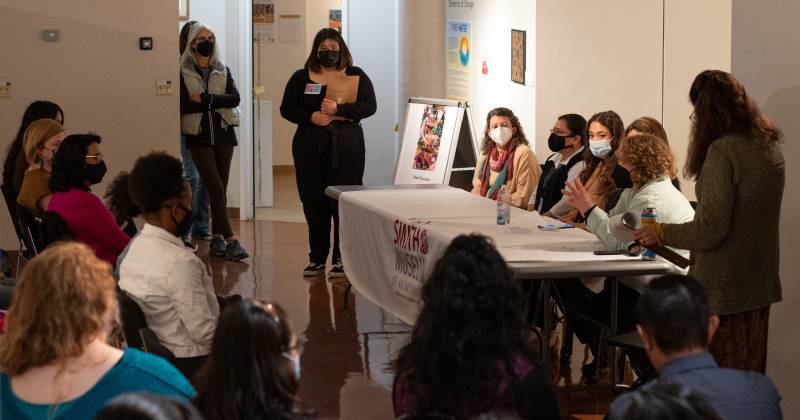
On the exhibit’s opening day, Garcia participated in a panel discussion, where she answered questions from the audience alongside Servin-Lacy, Hayes, and Sanchez Nunez. The women were also joined by MCN’s Director of Education and Communication, Jillian Hopewell, who explained that the organization’s commitment to the project continues a long tradition of setting up strategic partnerships with creative professionals for the purpose of documenting the lives of marginalized folks grappling with inequities. Previous projects include sponsoring the 2013 photography exhibit of Earl Dotter, whose images captured immigrant workers along Maryland’s Eastern shore.
“Ever since then, I have dreamed of doing something similar here,” Hopewell, a resident of Chico, explained. “Photographs have a way of engaging people in a different way and help to foster a deeper understanding of issues that may be hidden. As much as I love working with professional photographers, the idea that we could have people in the community tell their own story was incredibly appealing.”
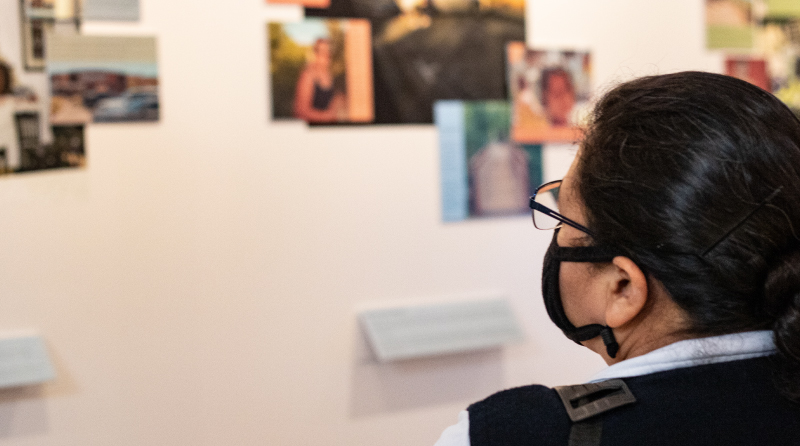
Bringing attention to the hidden aspects of such lives has long been an important motivator for Hayes. While completing her research coursework, Hayes realized just how often the narratives of children and women were overlooked, as well as centering the experience of the person collecting the stories, rather than those telling them. Frustrated by such limitations, Hayes resolved to give women and youth a platform to tell their stories within their own communities. According to Hopewell, that focus neatly tied in with MCN’s own mission.
“We have different educational goals depending on our audience, but ultimately, we offer a way to improve knowledge and understanding to better care for immigrant and migrant populations,” she said. “But this cannot occur effectively without bicultural knowledge, meaning that the best care happens when the community is involved in the development. This exhibit provides a window into the community and provides a culturally contextual way to understand what is happening in our local community.”
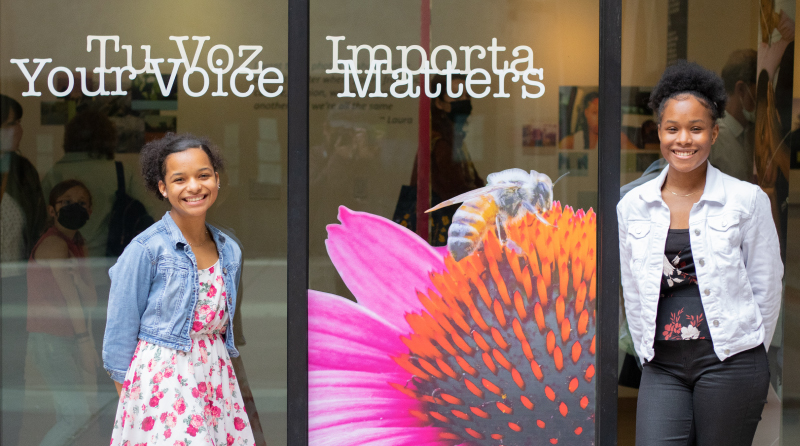
For Butte County residents looking to mark their own celebration of International Women’s Day, consider checking out the exhibit, which will be available through May 6. Museum hours are typically Tuesday through Saturday from 11 a.m. to 3 p.m. but interested parties should make every effort to verify closures with the museum directly. This project was made possible with support from California Humanities, a nonprofit partner of the National Endowment for the Humanities.
- Log in to post comments
